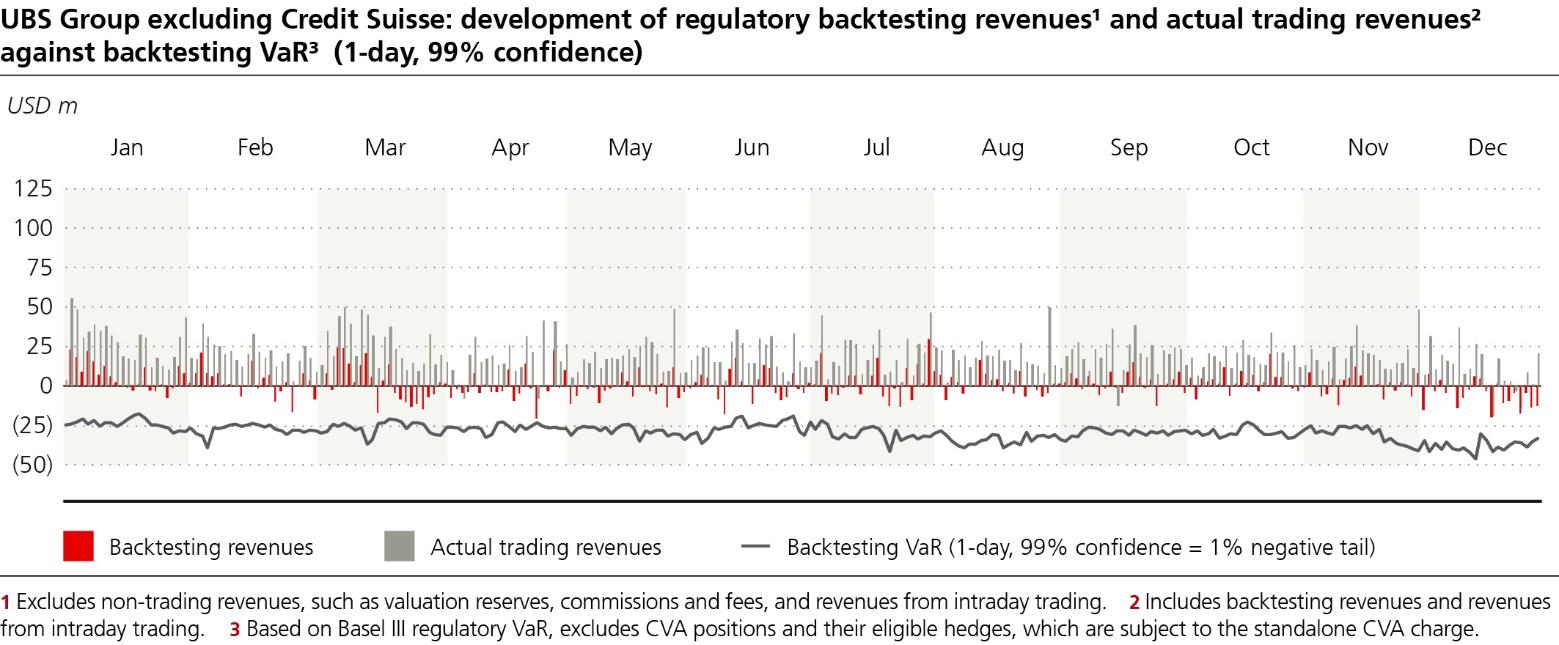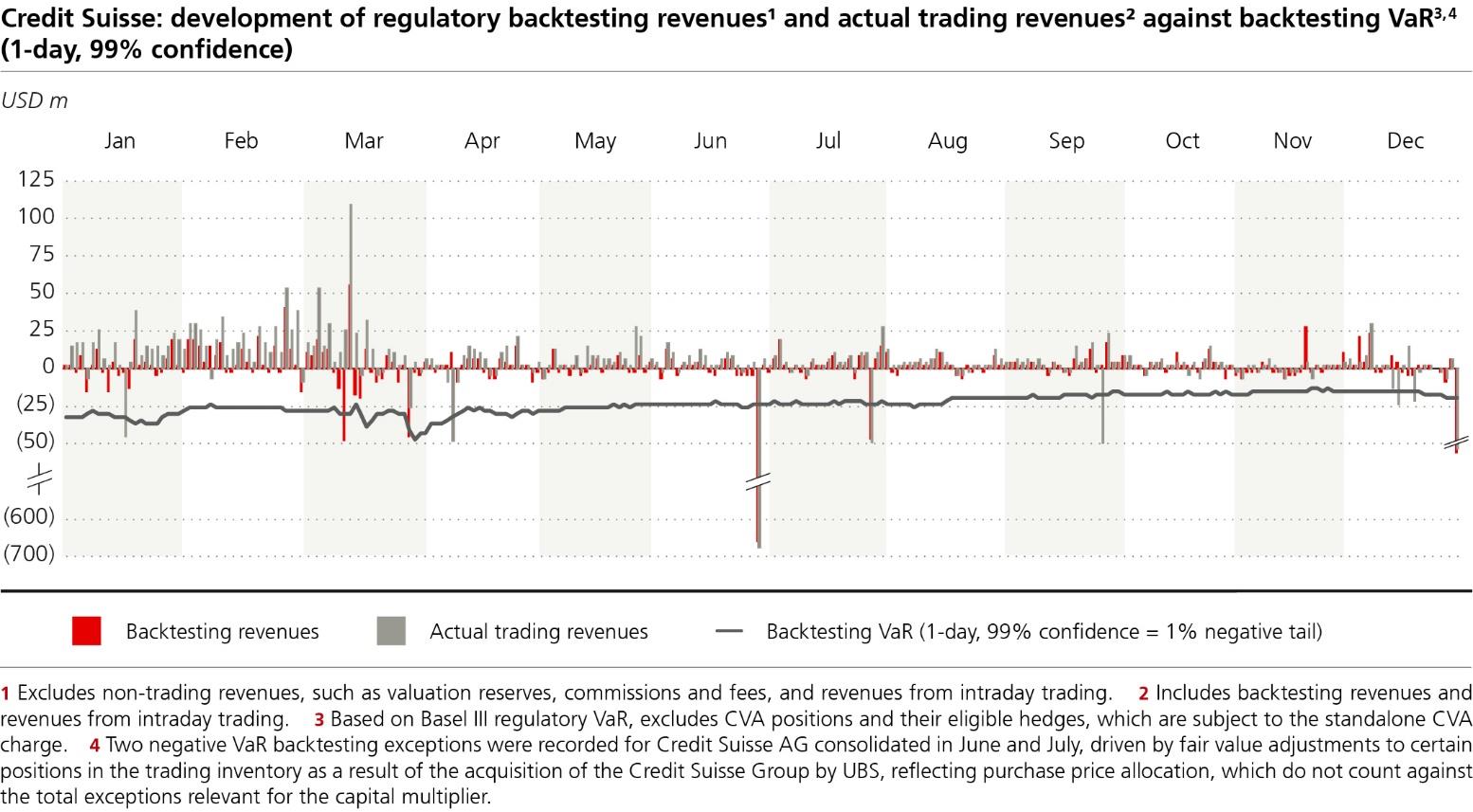31 December 2023 Pillar 3 Report |
UBS Group | Introduction and basis for preparation
11
Category
Definition of risk
Regulatory risk exposure
Risk-weighted assets
II. Counterparty credit risk
Counterparty credit
risk (CCR)
CCR is the risk that a counterparty for over-
the-counter (OTC) derivatives, exchange-
traded derivatives (ETDs) or securities
financing transactions (SFTs) will default
before the final settlement of a transaction
and cause a loss to the firm if the transaction
has a positive economic value at the time of
default.
Refer to section 6, Counterparty credit risk.
We primarily use internal models to measure
CCR exposures to third parties. All internal
models are approved by FINMA.
–
For OTC derivatives and ETDs
,
we apply the
effective expected positive exposure (EEPE)
and stressed expected positive exposure
(SEPE) as defined in the Basel
III framework.
–
For SFTs
, we apply the close-out period
approach.
In certain instances where risk models are not
available:
–
Exposure on OTC derivatives and ETDs
calculated considering the net positive
replacement values and potential future
exposure.
–
Exposure for SFTs
Accounting Standards carrying amount, net
of
collateral mitigation.
We apply two approaches to measure CCR RWA.
–
Advanced internal ratings-based (A-IRB)
approach
, applied for the majority of our
businesses. Counterparty risk weights are
determined by reference to internal counterparty
ratings and LGD estimates.
–
Standardized approach (SA),
generally based on
external ratings for a sub-set of our credit
portfolio, where internal measures are not
available.
We apply an additional credit valuation adjustment
(CVA) capital charge to hold capital against the risk
of mark-to-market losses associated with the
deterioration of counterparty credit quality.
Settlement risk
Settlement risk is the risk of loss resulting from
transactions that involve exchange of value
(e.g., security versus cash) where we must
deliver without first being able to determine
with certainty that we will receive the
countervalue.
Refer to section 3, Overview of risk-weighted
assets.
The IFRS Accounting Standards carrying
amount is the basis for measuring settlement
risk exposure.
We measure settlement risk RWA through the
application of prescribed regulatory risk weights to
the settlement risk exposure.
III. Securitization exposures in the banking book
Securitization
exposures in the
banking book
Exposures arising from traditional and
synthetic securitizations held in our banking
Refer to section 8, Securitizations.
The IFRS Accounting Standards carrying
amount after eligible regulatory credit risk
mitigation and credit conversion factor is the
basis for measuring securitization exposure.
For synthetic securitization transactions, the
exposure is equal to the fair value of the net
long or short securitization position.
Consistent with the BCBS, we apply the FINMA-
defined hierarchy of approaches for banking book
securitizations to measure RWA.
–
Internal ratings-based approach (SEC-IRBA)
,
considering the advanced IRB risk weights, if the
securitized pool largely consists of IRB positions
and internal ratings are available.
–
External ratings-based approach (SEC-ERBA)
, if
the IRB approach cannot be applied, risk weights
are applied based on external ratings, provided
that we are able to demonstrate our expertise in
critically reviewing and challenging the external
–
Standardized approach (SEC-SA) or 1,250% risk
weight factor,
if none of the aforementioned
approaches can be applied, we would apply the
standardized approach where the delinquency
status of a significant portion of the underlying
exposure can be determined or a risk weight of
1,250%.
For re-securitization exposures we apply either the
standardized approach or a risk weight factor of
1,250%.







